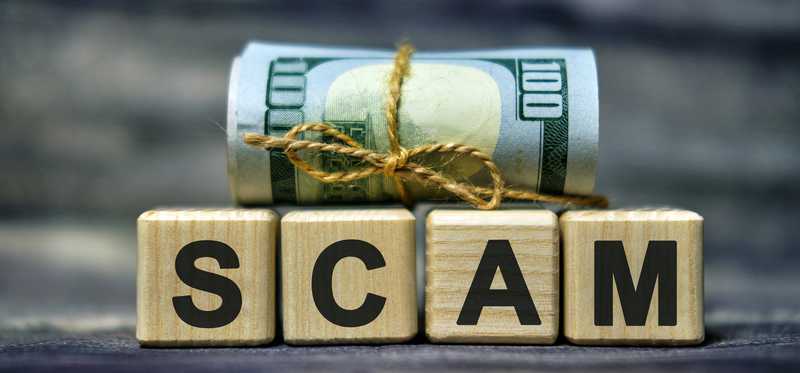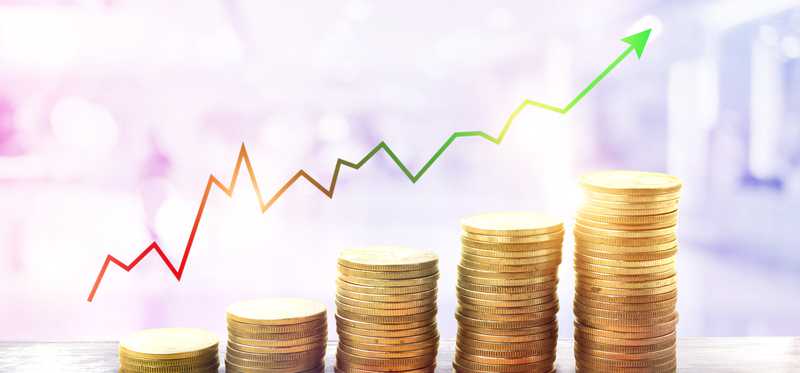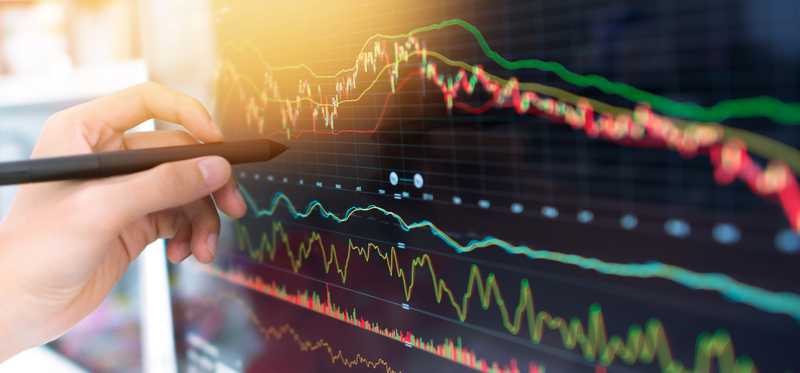9 Reasons Stock Price Doesn't Matter

9 Reasons Stock Price Doesn't Matter
Make sure the price is right
Price matters when you buy a car or a home. Price also matters when you buy insurance and shop for a used pair of designer shoes. But when it comes to investing, the price of a stock doesn't matter all that much. More than that, placing too much meaning in a stock's price can easily lead you into investing decisions you might later regret.
Here are nine reasons why you shouldn't use stock price to assess value -- or to determine which stocks you can afford.
5 Winning Stocks Under $49
We hear it over and over from investors, “I wish I had bought Amazon or Netflix when they were first recommended by the Motley Fool. I’d be sitting on a gold mine!” And it’s true. And while Amazon and Netflix have had a good run, we think these 5 other stocks are screaming buys. And you can buy them now for less than $49 a share! Simply click here to learn how to get your copy of “5 Growth Stocks Under $49” for FREE for a limited time only.
Previous
Next

1. Stock price only tells part of the story
Apple (NASDAQ: AAPL) is the world's most valuable company, with a market capitalization of more than $2 trillion. And yet, Apple stock trades for a reasonable $128 per share -- far less than Amazon (NASDAQ: AMZN), Alphabet (NASDAQ: GOOG) (NASDAQ: GOOGL), or Netflix (NASDAQ: NFLX).
Stock price, on its own, doesn't tell you much about a company's size or value. It is only the cost of a single unit of ownership. And since the size of that unit varies from company to company, it doesn't make sense to compare one company's stock price to another's.
Two metrics that are more comparable (and useful) are market capitalization and P/E ratio. Market capitalization is the stock price multiplied by the number of shares outstanding, a measurement of the company's size. P/E ratio is the stock price divided by earnings per share, which represents how much investors are willing to pay for $1 of earnings.
Previous
Next

2. Stock prices continually change
Stock prices fluctuate throughout the day based on supply and demand. When there is more demand than supply, the price rises. When there is more supply than demand, the price falls. Often these shifts are driven by investor reaction to news, such as earnings releases, economic reports, or global events. But that's not always the case.
On an uneventful day, Apple's stock price could drop by $1.50. That doesn't necessarily mean the company is slightly less capable of creating value than it was the day before. It does mean the supply-demand dynamic changed -- but you may not know why. Those normal fluctuations make it difficult to place too much importance on a company's share price at a single point in time.
Previous
Next

3. You can't comparison-shop stocks
When you are comparison shopping, pricing is an indication of value. Consider the process of shopping for car insurance. You collect a handful of quotes on the exact same coverages and then you buy the cheapest option. Why? Because a lower premium for the same coverage means you get more value for the price.
Buying stocks is vastly more complicated than that. Yes, you can buy a share of Apple for $128, while a share of Amazon will cost you $3,300. But you can't interpret that to mean Apple is a better value, the way you would with two insurance quotes. If you want to buy good value stocks, you have to look past stock price into other metrics like P/E ratio, debt-to-equity ratio, price-to-book ratio, etc.
Previous
Next

4. Companies can manipulate their stock price
In the second half of 2020, both Apple and Tesla (NASDAQ: TSLA) split their stocks. Apple implemented a 4-for-1 stock split, which quadrupled the number of shares outstanding. Tesla went even bigger with a 5-for-1 stock split, quintupling the number of outstanding shares.
Stock splits don't change a company's market capitalization, but they do change the stock price. A 4-for-1 stock split, for example, reduces the company's stock price by 75%. If the stock is trading at $100 per share before the split, it should be worth $25 after the split.
The primary reason a company splits its stock is to lower the share price and make it more accessible to a wider number of investors. Companies can also raise their share price artificially with a reverse split. This can happen when a stock is in danger of being delisted for trading below $1.
Previous
Next

5. Investors can manipulate stock prices
Investors, too, can manipulate stock prices. An aggressive form of stock price manipulation is what's called the pump-and-dump scam. Basically, an investor or group of investors drive up a stock's price by circulating misinformation via social media, messaging apps, and email newsletters. The content may say the company is about to announce an industry-changing invention or discovery -- implying or outright stating that anyone who buys the stock now will quickly turn a huge profit.
When investors respond and start buying the stock, the stock price rises. The investors behind the scam then sell their shares at a profit quickly. The stock price will crash, and the victims will have paid the price.
Pump-and-dump schemes usually involve penny stocks that are traded over the counter.
5 Winning Stocks Under $49
We hear it over and over from investors, “I wish I had bought Amazon or Netflix when they were first recommended by the Motley Fool. I’d be sitting on a gold mine!” And it’s true. And while Amazon and Netflix have had a good run, we think these 5 other stocks are screaming buys. And you can buy them now for less than $49 a share! Simply click here to learn how to get your copy of “5 Growth Stocks Under $49” for FREE for a limited time only.
Previous
Next

6. Stock price doesn't predict potential
It's easy to think cheap stocks have greater potential. After all, a stock that's trading at $1 only has to go up by $1 for you to double your money. By comparison, a doubling on a stock that's priced at $100 or $1,000 might seem far less likely.
In reality, the expensive stock may have an easier time doubling than the cheaper one. It's not because of the stock price, either; it's due to momentum. If the expensive stock carries a high price tag because of its record for delivering value to shareholders, it should grow faster than the penny stock with lackluster results.
Tesla is a great example. On Nov. 6, 2020, Tesla closed at $429.95 per share. Six months later, the stock closed at $663.54. That's a 54% gain in six months, which annualizes to 108% growth.
The takeaway? Winners can keep winning, no matter what the stock price is.
Previous
Next

7. Comparative trends are more telling
A company's stock price at a point in time isn't instructive. But you can learn something by reviewing how the stock price changes relative to its peers and the market. You might be thrilled to see a stock appreciate 12% in a year -- but not if peers and the S&P 500 grew 24% over the same period. In the same vein, you'd love to own the stock that declines 5% when the rest of the market suffered a 20% drop.
In either scenario, the starting and ending prices of the stock aren't important. Even the amount of the change isn't very meaningful until you compare it to an appropriate benchmark.
Previous
Next

8. You can buy the stock within an ETF
You may feel inclined to avoid expensive stocks for budgetary reasons. You can easily spend thousands building a portfolio of 20 or more individual stocks. Even if you had $3,000 or $4,000 in starting capital, adding to your portfolio over time could cost more than your mortgage.
An exchange-traded fund (ETF) can solve that problem. You get exposure to a diversified portfolio with a single share and then easily build that position over time on a budget. Vanguard S&P 500 ETF (NYSEMKT: VOO) trades for about $385 a share. For that price, you get exposure to 509 large-cap stocks. For even broader exposure, there's Vanguard Russell 3000 ETF (NASDAQ: VTHR). This portfolio represents 98% of the entire U.S. stock market, and you can get it for less than $200 per share.
Previous
Next

9. You can buy fractional shares
Fractional investing is another work-around for high stock prices. If your broker supports fractional shares, you'd simply buy the stocks you want in units of less than one. Can't afford $128 for Apple? You can spend $10 to buy 0.08 shares instead.
Even better, some brokers allow you to invest in ETFs fractionally. So you could spend your $10 to buy 0.02 shares of VOO. Then you'd own a piece of Apple, Microsoft (NASDAQ: MSFT), Amazon, Alphabet, and Facebook (NASDAQ: FB), along with 500 other stocks. That's budget investing!
5 Winning Stocks Under $49
We hear it over and over from investors, “I wish I had bought Amazon or Netflix when they were first recommended by the Motley Fool. I’d be sitting on a gold mine!” And it’s true. And while Amazon and Netflix have had a good run, we think these 5 other stocks are screaming buys. And you can buy them now for less than $49 a share! Simply click here to learn how to get your copy of “5 Growth Stocks Under $49” for FREE for a limited time only.
Previous
Next

Get your money's worth
Don't judge a stock by its price. On its own, price is not an indicator of value or potential -- a pricey stock can run up as fast, or faster, than a cheap one. And, thanks to ETFs and fractional investing, stock price doesn't have to signal affordability, either. You can own quality stocks, even when your budget is limited.
John Mackey, CEO of Whole Foods Market, an Amazon subsidiary, is a member of The Motley Fool’s board of directors. Suzanne Frey, an executive at Alphabet, is a member of The Motley Fool’s board of directors. Randi Zuckerberg, a former director of market development and spokeswoman for Facebook and sister to its CEO, Mark Zuckerberg, is a member of The Motley Fool's board of directors. Teresa Kersten, an employee of LinkedIn, a Microsoft subsidiary, is a member of The Motley Fool’s board of directors. Catherine Brock owns shares of Microsoft and Vanguard S&P 500 ETF. The Motley Fool owns shares of and recommends Alphabet (A shares), Alphabet (C shares), Amazon, Apple, Facebook, Microsoft, Netflix, Tesla, and Vanguard S&P 500 ETF. The Motley Fool recommends the following options: long January 2022 $1,920 calls on Amazon, long March 2023 $120 calls on Apple, short January 2022 $1,940 calls on Amazon, and short March 2023 $130 calls on Apple. The Motley Fool has a disclosure policy.
Previous
Next
Invest Smarter with The Motley Fool
Join Over Half a Million Premium Members Receiving…
- New Stock Picks Each Month
- Detailed Analysis of Companies
- Model Portfolios
- Live Streaming During Market Hours
- And Much More
READ MORE
HOW THE MOTLEY FOOL CAN HELP YOU
-
Premium Investing Guidance
Market beating stocks from our award-winning service
-
The Daily Upside Newsletter
Investment news and high-quality insights delivered straight to your inbox
-
Get Started Investing
You can do it. Successful investing in just a few steps
-
Win at Retirement
Secrets and strategies for the post-work life you want.
-
Find a Broker
Find the right brokerage account for you.
-
Listen to our Podcasts
Hear our experts take on stocks, the market, and how to invest.
Premium Investing Services
Invest better with The Motley Fool. Get stock recommendations, portfolio guidance, and more from The Motley Fool's premium services.